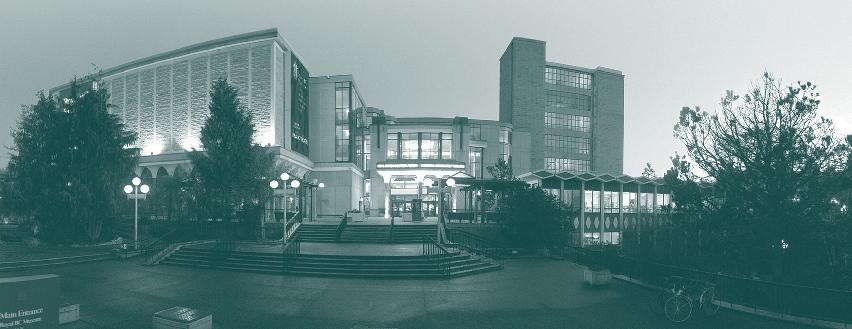
4 minute read
Protecting BC’s Biodiversity
Shannon West
Manager of Program Development, Habitat Conservation Trust Foundation Dr. Henry Choong Curator of Invertebrates, Royal BC Museum PROTECTING
BC’S BIODIVERSITY
3.

1. Habitat is key to healthy fish and wildlife populations. This biologist is monitoring vegetation growth following a prescribed burn in northeastern BC. Photograph courtesy of the Habitat Conservation Trust Foundation.
2. This collared grizzly bear is part of a study aiming to reduce human-caused bear mortality, including vehicle collisions. Photograph courtesy of Darryn Epp.
3. Found only on Vancouver Island, the Vancouver Island marmot is one of the rarest mammals in the world. HCTF supports the Marmot Recovery Foundation’s work to restore selfsustaining populations of marmots. Photograph courtesy of Oli Gardner. British Columbia has the greatest biodiversity of any Canadian province or territory. More large mammal species live here than anywhere else in North America, and some species, like the Vancouver Island marmot, live nowhere else on Earth. Unfortunately, many of BC’s fish and wildlife populations are in decline, for reasons such as habitat loss and degradation, climate change, invasive species, and disease. The Habitat Conservation Trust Foundation (HCTF) is working with partners to address these issues and keep BC’s fish and wildlife populations healthy. Since 1981, HCTF has provided over $190 million for projects benefitting a huge range of species, from wild sheep to sturgeon and goshawks to grizzly bears.

HCTF has partnered with the Royal BC Museum to showcase some of the HCTF-funded conservation initiatives happening across BC, including amazing photos of BC wildlife. See Celebrating 40 Years of Habitat Conservation in BC, on now in Clifford Carl Hall until April 30.
A Culture Shift for the Royal BC Museum
FOR CHANGE

Sandra Hudson
Communications Consultant
The Royal BC Museum is embarking on an ambitious plan to change the culture of the museum by addressing organizational challenges around equity, diversity, inclusion and accessibility (EDIA).
The work is being led by Royal BC Museum board chair and acting CEO Dr. Daniel Muzyka and supported by museum staff and consultants. When asked about the plan, Dr. Muzyka said, “I am very optimistic. Many organizations go through culture change processes, all driven by different circumstances. I believe we will be successful based on the dedicated efforts of everyone in the organization. The museum will learn, adapt and grow in the process. We will come out stronger on the other side.”
The recently unveiled plan was developed to directly address the culture of the museum and archives and move it toward becoming a safer and more inclusive place for staff, volunteers, visitors and the community. The museum is committed to continuing the modernization of museum practices and to ensuring all voices are included in the museum, particularly the voices of Indigenous people. The plan prioritizes staff psychological safety, antidiscrimination, a positive and supportive organizational culture, and decolonization. Staff training has been identified as a major component of the work needed for a culture shift to occur at the museum. Working with EDIA consultant Alden Habacon and his team, a cultural training plan has been developed for all staff. Training sessions for staff include Trust-Building 101: How to Foster Trust Within a Team, Professional Communications 101, Micro-Aggressions, Whiteness at Work, Unconscious Bias, Intercultural Skills, Indigenous Cultural Training and Allyship, and Fostering Psychological Safety at Work. Training sessions have now begun and will run through December 2021.
The work of the Indigenous Collections and Repatriation department (ICAR) continues to be central to the work of the museum. The new plan prioritizes increased resources to ICAR, including the introduction of Indigenous cultural advisors and knowledge keepers into key areas of the museum and archives, and increased lines of communication with the museum’s Indigenous Advocacy and Advisory Committee. Further work toward repatriation and decolonization continues to be given precedence, supporting integration of Indigenous knowledge into more collections areas and fostering an interdisciplinary approach. The board, under Dr. Muzyka’s leadership, has ordered an in-depth review of the museum’s organizational structure and has introduced an interim structure, which is now in place. The interim structure emphasizes the importance of EDIA work across the organization and looks to permanently embed it into the culture of the museum.
The Royal BC Museum is at the beginning of an important journey, one that looks to change the culture of the organization. At the same time the BC government has committed to modernizing the Royal BC Museum. This is a once-in-a-generation opportunity to better tell the stories of all communities in British Columbia. Modernizing how we steward our past will help build a better future for everyone.
For more information on the Royal BC Museum’s focus for change and the modernization of the museum, visit rbcm.ca/focus-for-change.










